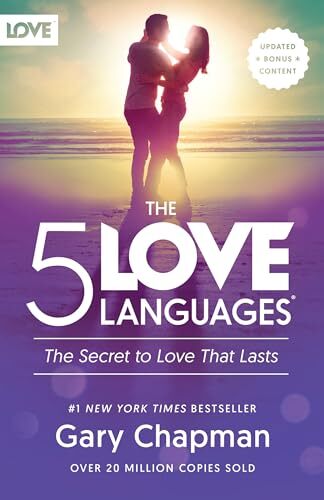
The title is cheesy, the cover is cheesy, and much of the writing is cheesy; most of the “real life examples” are either entirely fake or massively simplified; there is too much focus on Chapman’s personal religious beliefs and too many examples of traditional gender roles; and at times, you feel like you’re watching a late night infomercial. But despite all of these drawbacks, this book contains some valuable gems that makes it well worth reading:
“In love” vs “love”
- In love: This happens at the beginning and is largely out of your control.
- Love: This is something you do consciously and with effort.
This book is about the latter and makes an important point: love is a choice. It’s something that you do for someone else.
The 5 languages for expressing love
There are different ways to express love, which Chapman categorizes into 5 “love languages,” each of which has many dialects:
- Words of affirmation: expressing love through words (e.g., tell someone verbally how much you appreciate them and how proud you are of them, or send them a love note).
- Quality time: expressing love by giving someone your undivided attention (e.g., taking a walk or going on a picnic counts, watching TV together doesn’t).
- Gifts: expressing love by giving gifts—that is, visible symbols of love (e.g., flowers, jewelry, cards).
- Acts of service: expressing love by doing something for the other person (e.g., cook a meal, clean the house, paying the bills).
- Touch: expressing love through physical contact (e.g., holding hands, hugging, having sex).
Express love using the right languages
According to Chapman, everyone has a primary love language and a secondary one.
- If you express love in the right languages, their “love tank” will fill up, and they will be happy (and so will you).
- If you express love in the wrong languages, despite all your effort, their love tank will be empty, and they won’t be happy.
For example, if someone’s primary love language is quality time, you’d typically be better off taking them on a walk than buying them a necklace.
I suspect reality is a bit more complicated than Chapman indicates, and that rather than one primary language, people prefer different love languages in different circumstances, so you’ll need some mix of all 5. That said, the key insight for me is knowing that there are different ways of expressing love, and that some ways may be more appropriate for certain people than others.
Asking for love
- Criticism is an ineffective way to ask for love in your own language.
- Pay attention to this in yourself, as there are better ways to ask your partner for the type of love you want.
- And pay attention to it in your partner too!
- If your partner yells at you for always being too busy or working too much, it might mean their love language is quality time.
